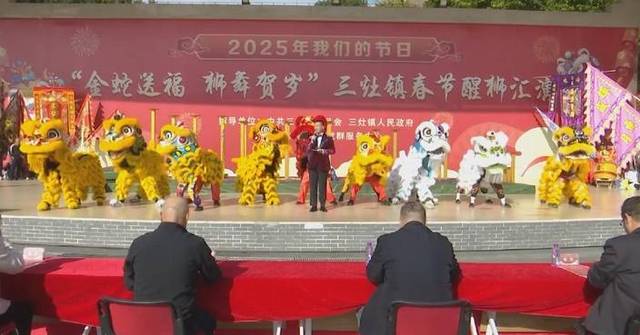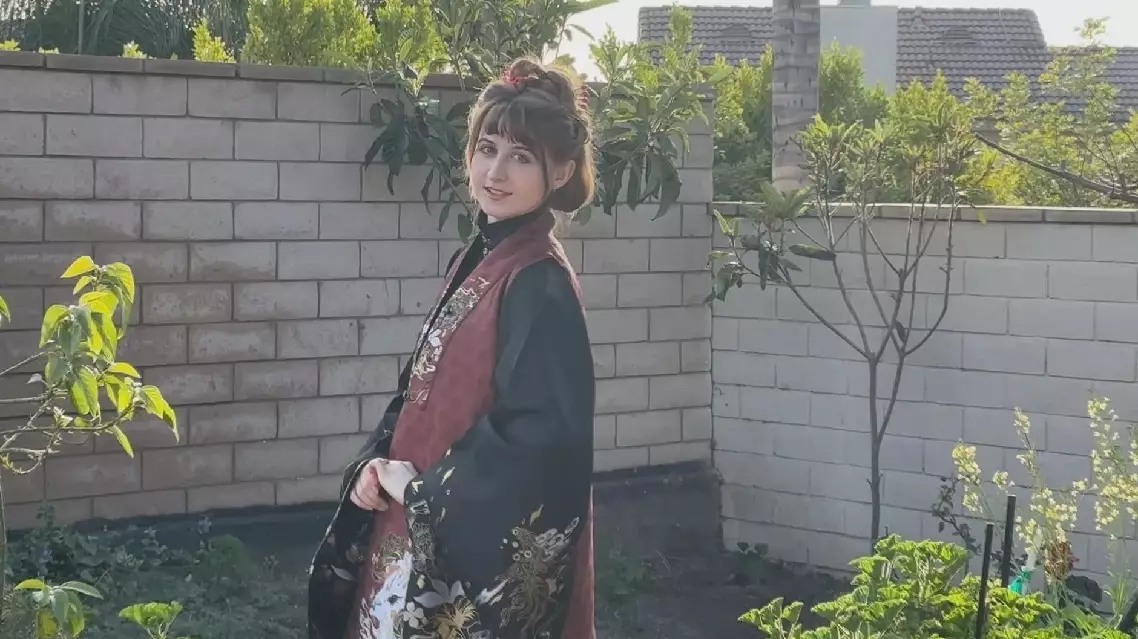Residents of south China’s Guangdong-Hong Kong-Macao Greater Bay Area have gathered in Guangdong Province for jubilant Spring Festival celebrations, marking the start of 2025 Chinese New Year with vibrant intangible cultural heritage and folklore events.
With the further integration and increasingly convenient living of the Greater Bay Area, many Hong Kong and Macao residents have flocked to Guangdong Province to enjoy the mainland’s festive vibe during the Spring Festival holiday running from Jan. 28 to Feb. 4.
In Guangdong’s Zhuhai City, the air was filled with excitement as lion dance teams from Hong Kong and Macao joined local performers for a spectacular show on Thursday, the second day of the Chinese New Year. The agile and fluid movements of the lions drew continuous applause from the audience, creating an atmosphere of joy and festivity.
“Every Spring Festival is the busiest time of the year for our lion dance team, but we never feel tired. We hope to enhance the festive atmosphere of the Chinese New Year in the Greater Bay Area.,” said Liang Jiahui, a member of Zhuhai New Business Youth Association.
At Chikan of Jiangmen City, a national historic and cultural town with a history of more than 370 years, the energetic “awakening lion” dance performances have further heightened the festive joy.
The awakening lion dance is the southern style of China’s traditional lion dance performances. Not limited to Spring Festival celebrations, it has been an essential performance for all festivals and event celebrations in Guangdong for over 1,000 years. Combining Chinese martial arts with the movements of lions, the performance symbolizes strength, vitality and the spirit of striving and flourishing.
From performances on ground to intricate feats on quincuncial piles, the visually stunning show made it an unforgettable experience for the cheerful holidaymakers.
“I came here to feel the mainland’s Spring Festival atmosphere. I’m really happy. The view here is wonderful,” said Ms. Wong from Hong Kong.
The vibrant Yingge dance – a national intangible cultural heritage item – was also staged at the riverside town. The colorful costumes and the high-pitched background music lifted the atmosphere there to another high point.
Originating in the Chaoshan area in Guangdong Province, the Yingge dance is renowned for its martial arts movements, with dramatic leaps, turns and jumps all contributing to its charm. The energetic Yingge Dance dates back to the Ming Dynasty (1368-1644) and is often performed during traditional Chinese festivals.
“This is the first time for me to watch the Yingge dance personally, which is very spectacular and wonderful. I think more such shows should be held during the Spring Festival to help inherit our culture,” said Ms. Fung from Hong Kong.
Festive atmosphere of Greater Bay Area enhanced by cultural heritage performances
A Boston native girl has made it her mission to explore and showcase Hanfu, China’s traditional attire, and promote cultural exchanges between the two countries.
Hanfu, a symbol of Chinese cultural heritage, was born in the ancient residential areas of the Han ethnic group, where it has been worn for generations.
With a renewed interest in traditional culture among Chinese youth and increased visibility on social media, Hanfu has regained popularity in recent times.
Captivated by the elegance and beauty of Hanfu, the American girl Rachel Yu likes to wear it and delve into its rich history. She can distinguish between the styles of Hanfu from various dynasties and create suitable hairstyles to complement each outfit.
Rachel creates and shares online videos showcasing her presentations of Hanfu.
“So when I very first started to do hair, my hair was very short at that time, so I looked online to see how to make a Hanfu hairstyle for short hair. I can’t find anything. So I started to look at like drawings and like Tang Dynasty (618-907) artifacts and then I just tried to recreate it myself. And then I’m like ‘Oh I figured it out.’ So then I posted a video showing it for someone else since I couldn’t find a video. And then people were like ‘What? This is so cool.’ And that’s how I very first started making Hanfu videos,” she said.
Rachel first encountered Hanfu through online videos in 2018.
“I actually got the video suggested to me. I love watching fashion content. I also got a video about the Hanfu in China. I was like, ‘Oh, what is this?'”she said.
Rachel was immediately captivated by the charm of Hanfu and began to search for more information online. However, she found that there were few English resources about Hanfu, and most of the videos she discovered were in Chinese.
Determined to deepen her understanding, Rachel made up her mind to learn Chinese from that moment on.
“The language barrier is a big challenge because I will find a video like ‘Ah, this is such a cool video.’ It’s a cool video, but I can’t understand what it is saying. But I still just watch all the videos because I can learn from seeing even if I don’t know what they’re saying sometimes,” she said.
In 2022, Rachel received her first Hanfu, and she vividly remembers how it felt to wear it.
“I feel this very elegant and very comfortable at the same time, like ‘Oh, I feel like a royal princess,'” said Rachel.
Now, Rachel is familiar with the characteristics of Hanfu from different dynasties. She also blends Hanfu with modern outfits for her everyday style. She has amassed two full closets of Hanfu at her home in Boston.
Rachel has joined a Hanfu club in Boston and participates in various activities organized by the club, including Hanfu shows.
She is delighted to see that more and more Americans are developing an appreciation for Hanfu and discovering Chinese culture through this beautiful attire.
“Clothes, you don’t need to know everything to appreciate it. Like you can just see and be like, ‘Oh, that’s so pretty.’ And then I feel like that kind of thing brings people together. Like when people eat food from different cultures and they’re like, ‘Oh, this is delicious.’ You know, and then that brings the people together. And I think that Hanfu, it’s another thing that can do that and just have people enjoy the beauty. And it’s like a little more special because it’s connected to history. And I think that’s really cool, because as you learn more about Hanfu, you also learn more about Chinese history, which is not taught very much in America,” said Rachel.
American girl devotes to studying Hanfu culture, promoting cultural exchanges



